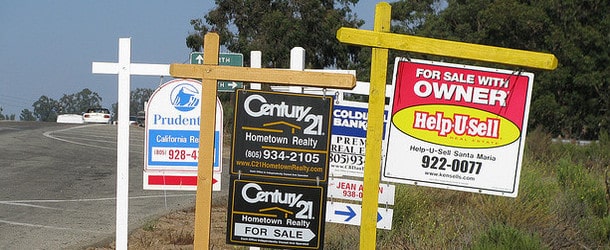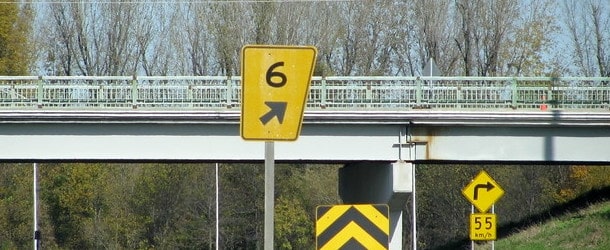
It’s time for another match-up, this time we’ll compare buying a new home versus purchasing an old one.
For the record, some home builders refer to existing homes as “used,” which sounds kind of silly considering we’re talking about a house and not a car.
Ultimately, it’s a marketing gimmick to sway you toward buying new as opposed to old, but let’s continue on to determine the pros and cons.
Millennials and Gen X Are Big on New Homes
A recent report from the National Association of Home Builders found that interest in newly-built homes has surged.
They noted that during the fourth quarter of 2020, 41% of prospective buyers were searching for a newly-built home, double the 19% share a year earlier.
At the same time, the share interested in an existing home fell from 40% to 30%.
It’s even more pronounced when we break it down by generation, with 50% of Millennial and 48% of Gen X buyers looking to buy a new home.
Meanwhile, just 13% of Boomers indicated that they were looking for a new home vs. existing.
Interestingly, Gen Z is a little more into existing homes than Boomers with a 38% share, but still below that of Millennials and Gen X.
New Homes Are Untouched and Clean
- The number one reason to buy a new home is probably the fact that it’s never been lived in
- Some people may not like the idea of living somewhere that was previously occupied
- It also might feature the newest amenities such as improved insulation and solar panels
- And in theory you shouldn’t have to repair or renovate anything right away
The most obvious benefit to buying a new home as opposed to an old, existing, or used one is the fact that it’s brand spanking new.
It’s untouched, it’s clean, everything is in good working order and nothing needs to be repaired. At least that’s the hope.
That’s a pretty huge incentive to buy new. You won’t have to worry about the typical costs of homeownership for the first several years, right?
Another benefit to buying new is that the home (or townhouse or condo) should have all the latest amenities.
Remember when it was all the rage to have stainless steel appliances and granite countertops?
Well, today’s new homes come with solar panels, energy-saving windows, smart appliances, USB outlets, electric vehicle charging stations, thermostats and door locks you can control with your phone, and other features that might make your used home look really old, especially a few years down the line.
Aesthetics aside, these upgrades could actually save you a lot of money each year on utility costs because they’re designed to be cost-efficient, not just handy. You might even get a tax break!
Not only that, but many of these new homes use low-VOC paints and flooring, which are supposedly better for your health. Who knows what lurks in some of the older homes?
Additionally, new home buyers often get the opportunity to fine-tune the home they buy by selecting certain features, colors, styles, etc., and even financing any add-ons into the mortgage loan amount.
It Can Be Easier to Buy a New Home
- It might be easier to finance a new home with a mortgage
- Home builders often have their own home loan divisions
- So they’ll be motivated to work with you to get the deal done
- But still take the time to shop around and negotiate since you don’t need to use their preferred company
And speaking of mortgages, most home builders have their own financing departments that make it easy to get a mortgage.
Whether it’s the best deal is another question, but if you simply want in, your odds are probably better with a new home. After all, the builder has a vested interest to get you financing.
There’s probably also a lot less competition for a new home, seeing that you’re probably checking out a brand new neighborhood full of vacant homes to choose from.
This can be a huge advantage in a seller’s market, which we’re experiencing at the moment. Instead of a bidding war, you might be able to pick and choose from a selection of available properties.
You can even pick among different sizes and floor plans to get just the right amount of space, as opposed to having to conform to what’s available in the existing market.
You might be thinking, hey, this sounds great, sign me up now! Why on earth would I want a used home with dodgy popcorn ceilings and laminate countertops?
But wait, there’s more to homes than their shiny exteriors and what’s inside.
Don’t Forget About Location…
- Location is and will always be the biggest property value driver
- And new construction homes are often in less desirable areas
- Or in the outskirts of urban areas because that’s where new land is available
- Be sure to take that into consideration as a major tradeoff to buying a new home
Let’s face it; the old adage that location is everything in real estate is true. It’s always been true, and always will be true. That is, if you want to see your property actually go up in value.
And guess what. Brand new homes often ren’t being built in the best locations. When it comes down to it, there’s no space for a new development in an established or central location.
Sure, you might see a new condo development, but new homes most likely won’t be that central. They’ll be on the outskirts of town, or in a “trendy” or “up-and-coming” area.
In other words, there’s going to be a commute if you buy new, and the location might be questionable at best in terms of value.
There might even be multiple new developments surrounding yours, with tractors and hammering construction workers doing what they do all day long.
That being said, it is possible to buy a new home in an area that flourishes. One hint it’s the right area might be the stores that are built nearby, such as a Whole Food’s or Trader Joe’s.
Of course, with an existing or used home, you can buy in the heart of the city, or in an area you know well that is insulated by a lack of available space and construction.
That buffer means the property should hold up well in terms of value, even during a downturn, assuming the area isn’t subject to obsolescence.
A used home might also give you the ability to walk to work, or to popular restaurants, bars, shops, and so on.
At the same time, a used home doesn’t necessarily have to be old inside. If you shop around, you might be able to find an old home that has already been remodeled to your liking.
And even if it hasn’t, that shouldn’t stop you from buying it and making renovations if it’s got good bones.
New Homes Are 20% More Expensive
- Ultimately you pay a premium for a new home (just like a brand new car)
- Apparently the cost is 20% more on average per a study from Trulia
- So while a new home might be cheaper with regard to maintenance and renovation
- You still need to consider the upfront cost to get an apples-to-apples comparison
A while back, Trulia determined that new homes (built in 2013-2014) cost roughly 20% more than similar existing homes.
They also found that two in five Americans would prefer to buy a new home, compared to just 21% opting for an existing home and 38% declaring no preference.
But when it came to that 20% markup, only 17% would actually pay the premium to get the new house.
So to get this straight, you might have to pay 20% for a new home AND you won’t be in a central location.
You’ll be in an untested location that might wind up being a ghost neighborhood in a decade if things don’t work out as planned.
During the most recent housing crisis, a lot of new home communities were hit the hardest, whereas existing homes saw their values decline but prop back up over time.
Of course, if you opt for new you’ll probably have all the latest technology and no major issues.
And if you go with an older home, you might have major bills on your hands when the roof gives out, or you discover serious plumbing issues.
So you’ll need to do your due diligence when buying an old home to ensure the property is in adequate shape. This means paying for a quality inspection (or two).
Then again, I’ve heard really negative stuff about new homes too, with many claiming workmanship has gone to you know what these days.
In other words, you’re not out of woods if you buy new either, though there might be some kind of warranty in place for a while.
At the end of the day, it’s probably okay to consider both new and used homes when looking for a property, and including both types should increase your odds of finding a winner.
As long as you take the time to inspect the property and the neighborhood, negotiate the right place, and make sure you can afford the place, you should be okay.
Lastly, you should make sure you actually want to own as opposed to rent because owning comes with many more responsibilities, whether you buy new or used.
Advantages to Buying a New Home
- Brand new, clean, no major issues
- Move-in ready (no wait or work to be done)
- Cool new technology
- Green features could reduce utility costs and/or provide tax incentives
- Trendy design
- Ability to customize
- Can finance additions into mortgage
- Possibly easier to get financing with home builder
- Less competition, more choices on floor plans
Disadvantages to Buying a New Home
- More expensive than buying used
- Location probably isn’t ideal
- Despite being new, workmanship might be questionable
- Could be subject to costly HOAs, even if it’s a house
- Neighborhood dynamic is unknown
- Property values might be more volatile
- Construction nearby (eyesore and noisy)
- More cookie-cutter, less unique
Advantages to Buying an Existing Home
- Possibly cheaper
- Better, more central location
- Can buy in an established school district
- Can own in a more reputable and recognized neighborhood
- Old house might have new upgrades
- You can always renovate if need be
- Older houses tend to have more character, custom design
- Could actually be built better than a new home
Disadvantages to Buying an Existing Home
- Harder to find an existing home (less inventory)
- Might have major problems you don’t initially notice
- Financing could be tricky (if unpermitted work, etc.)
- Could still be more expensive than buying new
- Fewer amenities, especially as homes get more tech-integrated
- The neighborhood might be in decline
- More competition to get your offer accepted
- Might have to settle for a smaller, less ideal home to get right location



